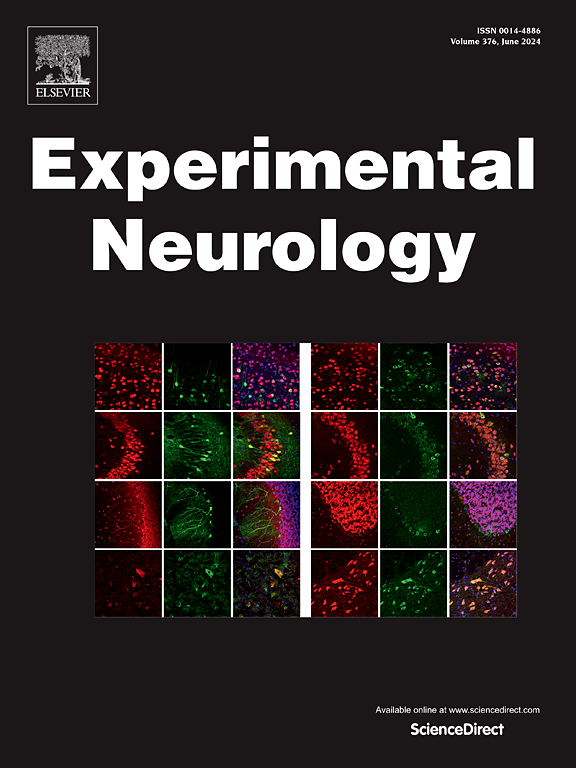Preventive effects of transcranial photobiomodulation on epileptogenesis in a kainic acid-induced rat epilepsy model
IF 4.6
2区 医学
Q1 NEUROSCIENCES
引用次数: 0
Abstract
Objective
Temporal lobe epilepsy affects nearly 50 million people worldwide and is a major burden to families and society. A significant portion of patients are living in developing countries with limited access to therapeutic resources. This highlights the urgent need to develop more readily available, noninvasive treatments for seizure control. This research explored the effectiveness of transcranial photobiomodulation (tPBM), a non-invasive method utilizing photon-tissue interactions, for preventing epileptogenesis and controlling seizures.
Methods
In a kainic acid (KA)-induced rat model of epilepsy, two different wavelengths of tPBM, 808 nm and 940 nm, were applied separately in two groups of animals (KA+808 and KA+940). The ability of tPBM for seizure control was evaluated by comparing the occurrence rate of interictal epileptiform discharges (IED) and behavioral seizures among three groups: KA, KA+808, KA+940. Prevention of epileptogenesis was assessed by comparing the occurrence rate of high frequency oscillations (HFOs), especially fast ripple (FR) rate, among the three groups. Nissl staining and immunostaining for the apoptosis marker caspase-3 were used as indications of neuroprotection.
Results
The KA+808 group and the KA+940 group showed significantly lower FR and IED rates compared to the KA group. Weekly FR rates started to drop during the first week of tPBM treatment. The KA+808 and KA+940 groups also displayed milder seizure behaviors and less neuronal loss in hippocampal areas compared to KA rats without tPBM treatment. Similarly, lower caspase-3 levels in the KA+808 and KA+940 compared with the KA group suggested effectiveness of tPBM in reducing cell death.
Significance
tPBM of 808 nm/940 nm showed effectiveness in suppressing epileptogenesis and ictogenesis in the KA-induced rat epilepsy model. This effectiveness of tPBM can be linked to the neuroprotection benefits of photon-tissue interactions. Further studies are warranted to elucidate the fundamental mechanism of tPBM protection, determine optimal treatment parameters and validate its effectiveness in other epilepsy models.
经颅光生物调节对凯尼酸诱导的大鼠癫痫模型中癫痫发生的预防作用
目的:颞叶癫痫影响着全球近 5000 万人,是家庭和社会的主要负担。很大一部分患者生活在发展中国家,治疗资源有限。这凸显了开发更多随时可用的非侵入性治疗方法来控制癫痫发作的迫切需要。本研究探讨了经颅光生物调控(tPBM)这种利用光子与组织相互作用的非侵入性方法在预防癫痫发生和控制癫痫发作方面的有效性:方法:在凯因酸(KA)诱导的大鼠癫痫模型中,在两组动物(KA + 808 和 KA + 940)中分别应用两种不同波长的 tPBM(808 nm 和 940 nm)。通过比较三组动物发作间期癫痫样放电(IED)和行为发作的发生率,评估了 tPBM 控制癫痫发作的能力:KA、KA + 808、KA + 940。通过比较三组患者的高频振荡(HFO)发生率,尤其是快速波纹(FR)发生率,评估了癫痫发生的预防情况。Nissl染色和细胞凋亡标志物-caspase-3的免疫染色被用作神经保护的指标:结果:与 KA 组相比,KA + 808 组和 KA + 940 组的 FR 和 IED 率明显较低。在 tPBM 治疗的第一周,每周 FR 率开始下降。与未接受 tPBM 治疗的 KA 大鼠相比,KA + 808 组和 KA + 940 组的癫痫发作行为也较轻微,海马区的神经元丢失也较少。同样,与 KA 组相比,KA + 808 和 KA + 940 组的 caspase-3 水平较低,这表明 tPBM 能有效减少细胞死亡。tPBM 的这种有效性可能与光子-组织相互作用的神经保护作用有关。我们有必要开展进一步的研究,以阐明 tPBM 保护的基本机制,确定最佳治疗参数,并验证其在其他癫痫模型中的有效性。
本文章由计算机程序翻译,如有差异,请以英文原文为准。
求助全文
约1分钟内获得全文
求助全文
来源期刊

Experimental Neurology
医学-神经科学
CiteScore
10.10
自引率
3.80%
发文量
258
审稿时长
42 days
期刊介绍:
Experimental Neurology, a Journal of Neuroscience Research, publishes original research in neuroscience with a particular emphasis on novel findings in neural development, regeneration, plasticity and transplantation. The journal has focused on research concerning basic mechanisms underlying neurological disorders.
 求助内容:
求助内容: 应助结果提醒方式:
应助结果提醒方式:


